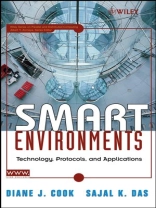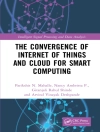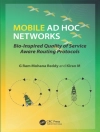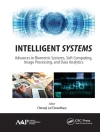Smart Environments contains contributions from leading researchers, describing techniques and issues related to developing and living in intelligent environments. Reflecting the multidisciplinary nature of the design of smart environments, the topics covered include the latest research in smart environment philosophical and computational architecture considerations, network protocols for smart environments, intelligent sensor networks and powerline control of devices, and action prediction and identification.
Tabla de materias
Contributors.
Foreword by (Howard E. Shrobe).
Acknowledgements.
PART 1: INTRODUCTION.
1. Overview (D. Cook & S. Das).
PART 2: TECHNOLOGIES FOR SMART ENVIRONMENTS.
2. Wireless Sensor Networks (F. Lewis).
3. Power Line Communication Technologies (H. Latchman & A.Mundi).
4. Wireless Communications and Pervasive Technology (M.Conti).
5. Middleware (G. Youngblood).
6. Home Networking and Appliances (D. Marples & S.Moyer).
PART 3: ALGORITHMS AND PROTOCOLS FOR SMART ENVIRONMENTS.
7. Designing for the Human Experience in Smart Environments (G.Abowd & E. Mynatt).
8. Prediction Algorithms foor Smart Environments (D. Cook).
9. Location Estimation (Determination and Prediction) Techniquesin Smart Environments (A. Misra & S. Das).
10. Automated Decision Making (M. Huber).
11. Privacy, Security, and Trust Issues in Smart Environments(P. Nixon, et al.).
PART 4: APPLICATIONS.
12. Lessons from an Adaptive Home (M. Mozer).
13. Smart Rooms (A. Chen, et al.).
14. Smart Offices (C. Gal).
15. Perceptual Environments (A. Pentland).
16. Assistive Environments for Individuals with Special Needs(A. Helal, et al.).
PART 5: CONCLUSIONS.
17. Ongoing Challenges and Future Directions (S. Das & D.Cook).
Index.
Sobre el autor
DIANE J. COOK, Ph D, is a professor in the Department of Computer Science and Engineering at the University of Texas at Arlington, where she leads the Mav Home smart home project and directs the Artificial Intelligence Research Laboratory. A senior member of the IEEE and member of the American Association for Artificial Intelligence, she also sits on the Board of Governors for the IEEE’s Systems, Man, and Cybernetics Society.
SAJAL K. DAS, Ph D, is a professor in the Department of Computer Science and Engineering and Founding Director of the Center for Research in Wireless Mobility and Networking (CRe WMa N) at the University of Texas at Arlington. He is the coauthor of Mobile Wireless Computing: A Quantitative Approach.












